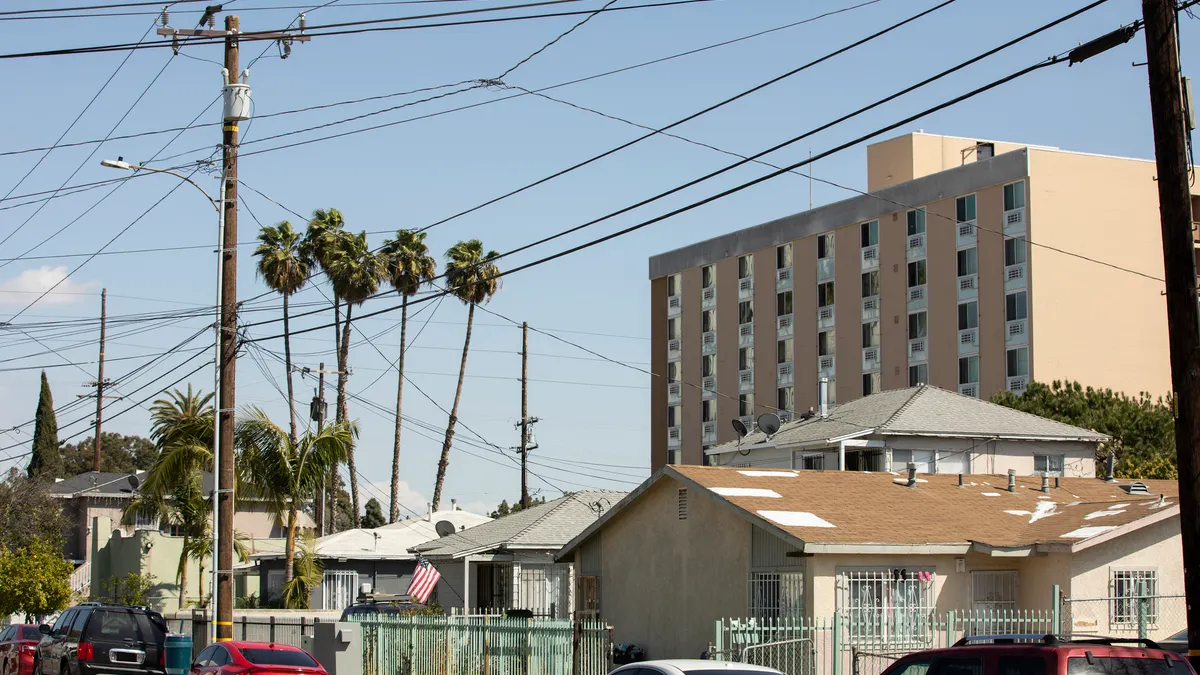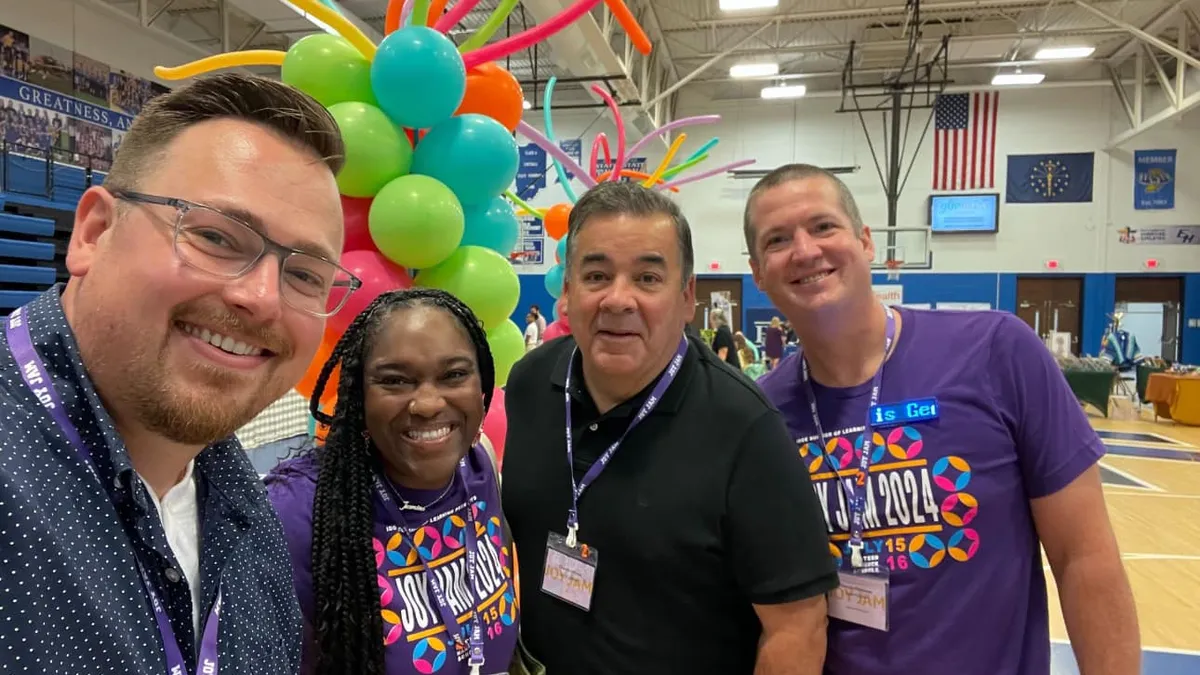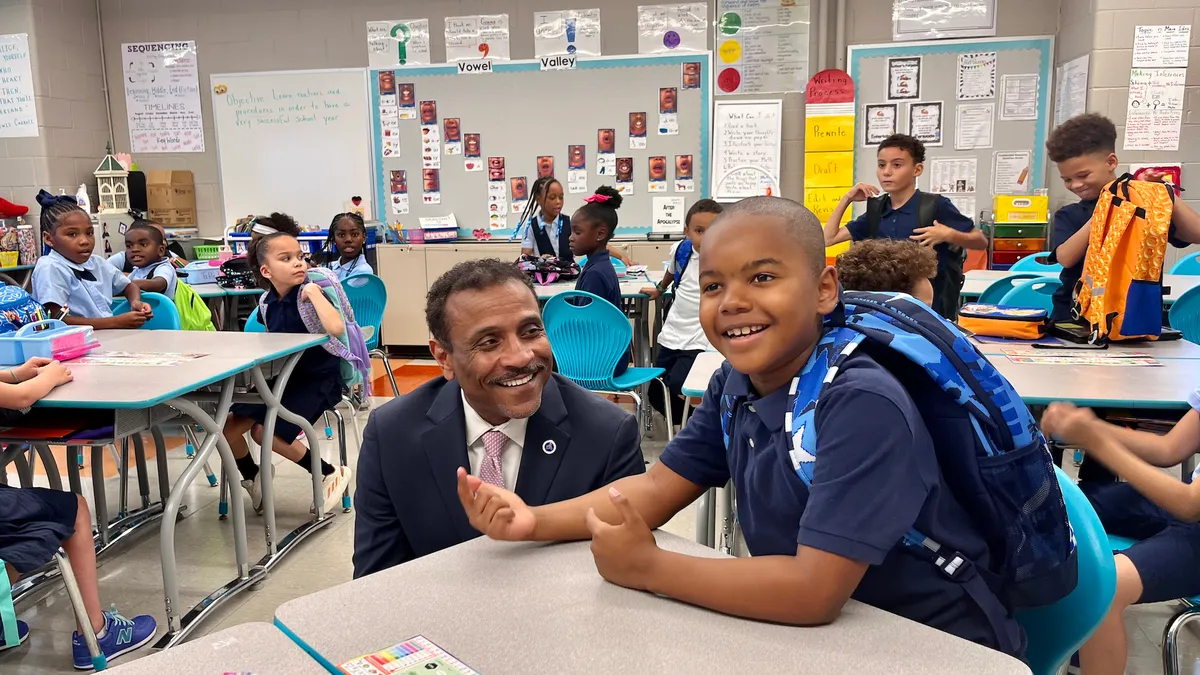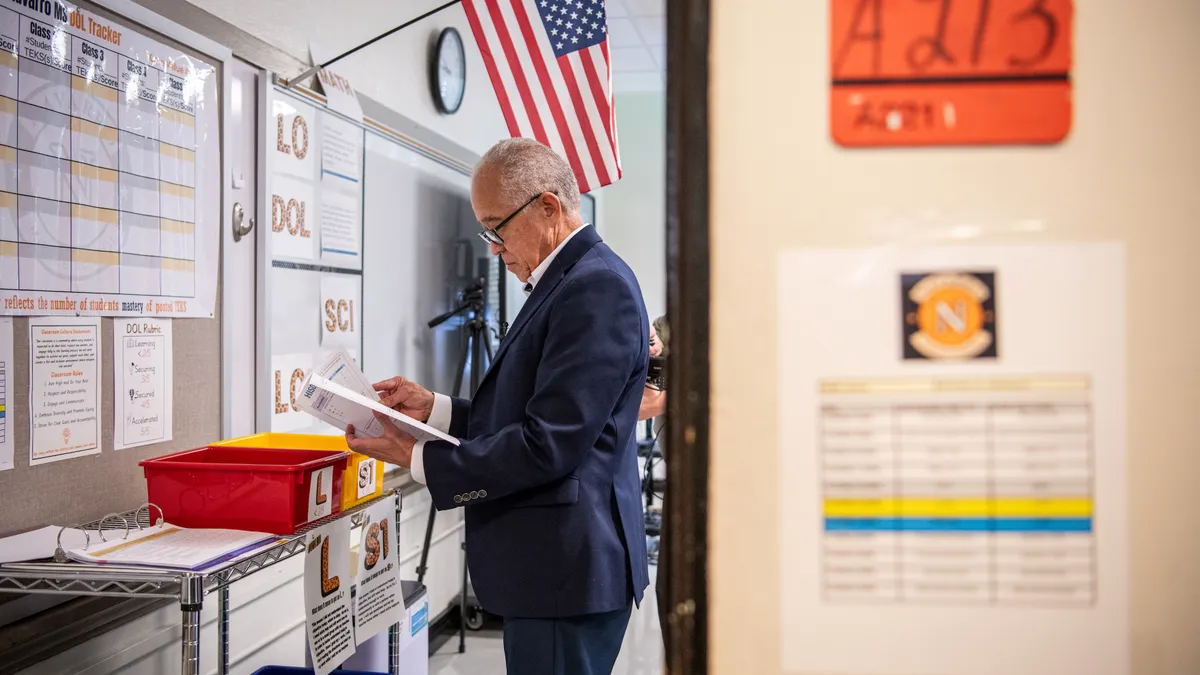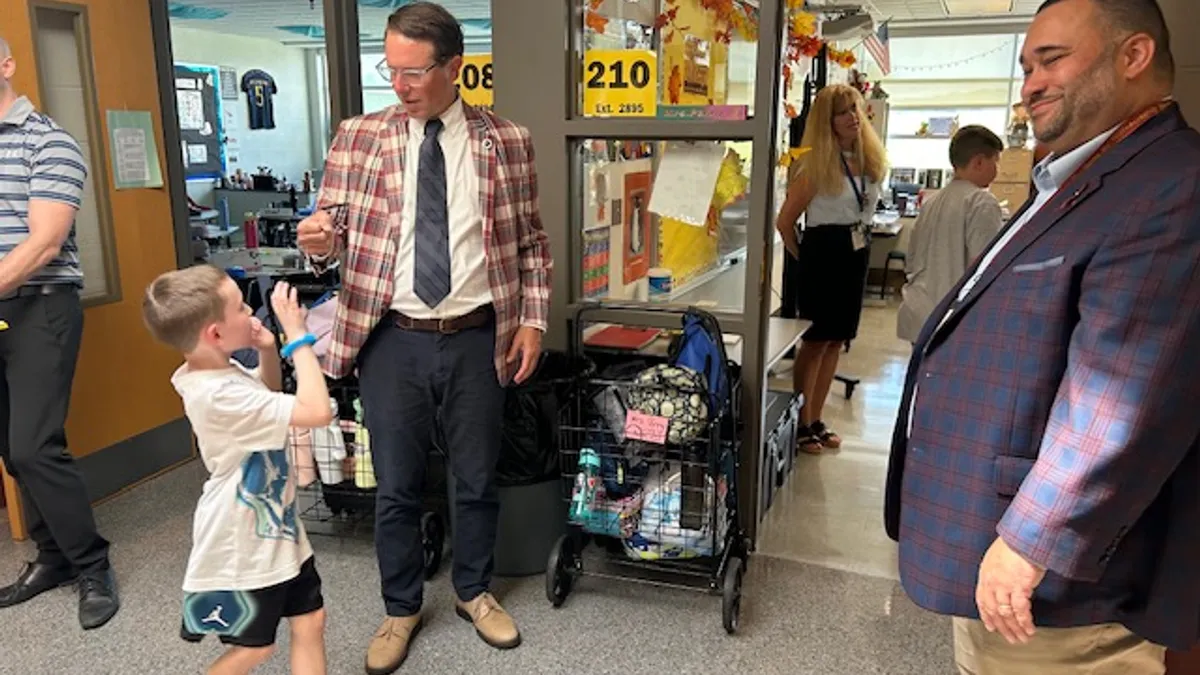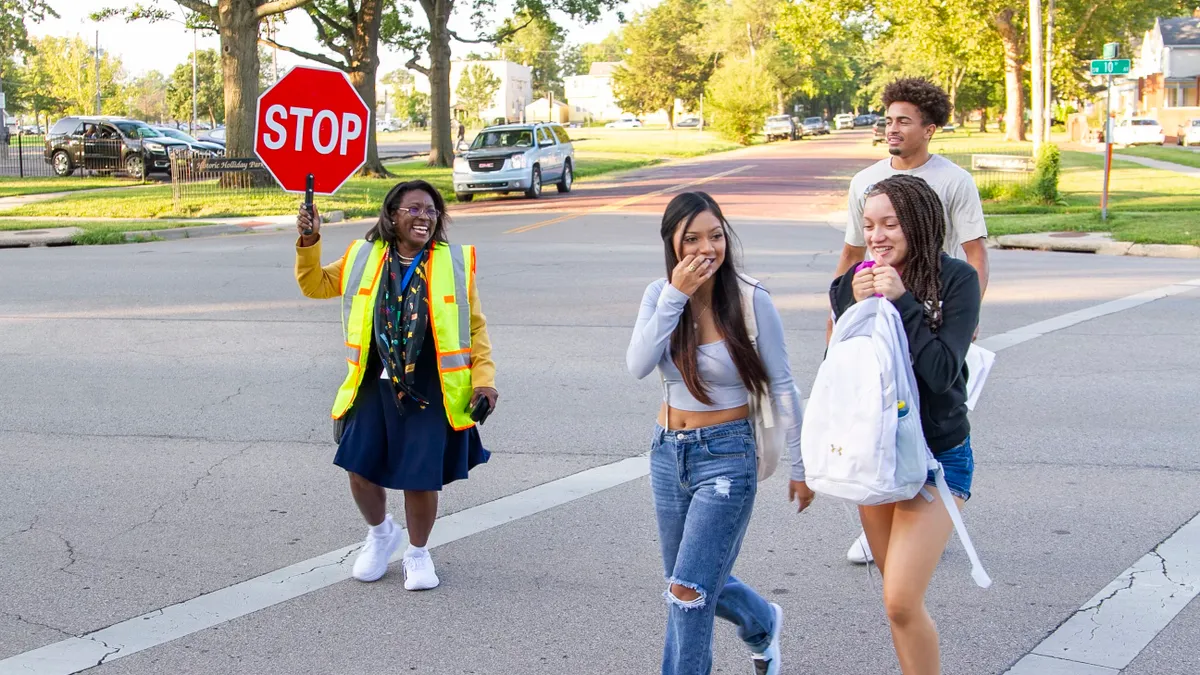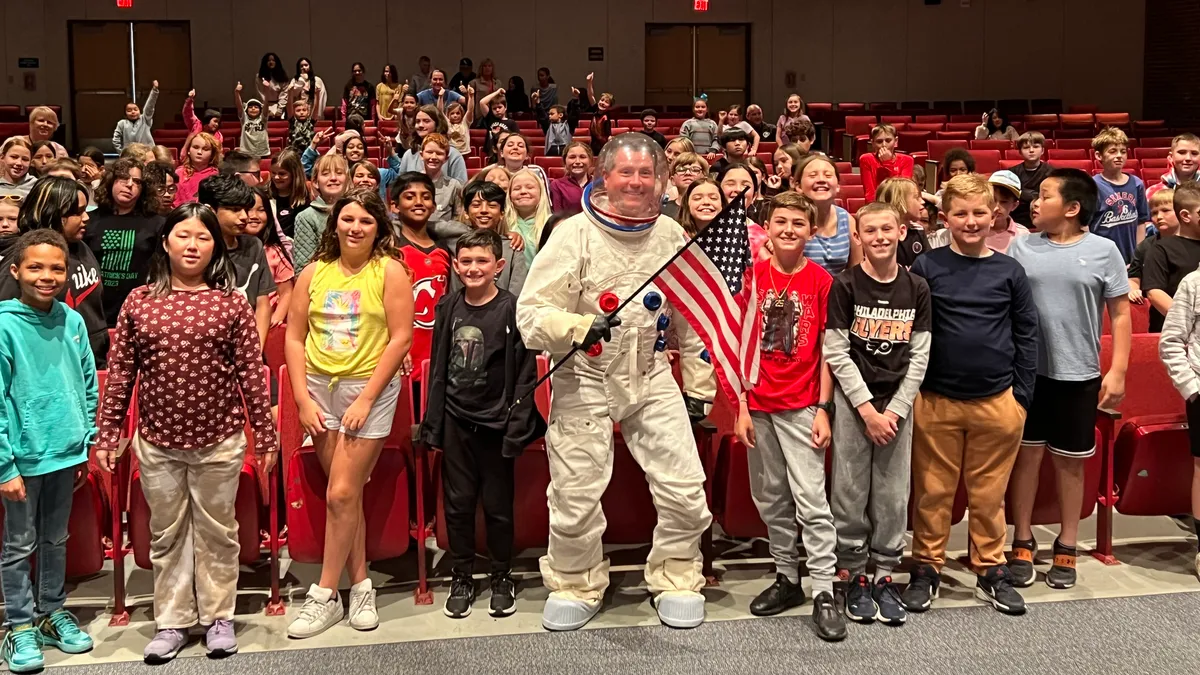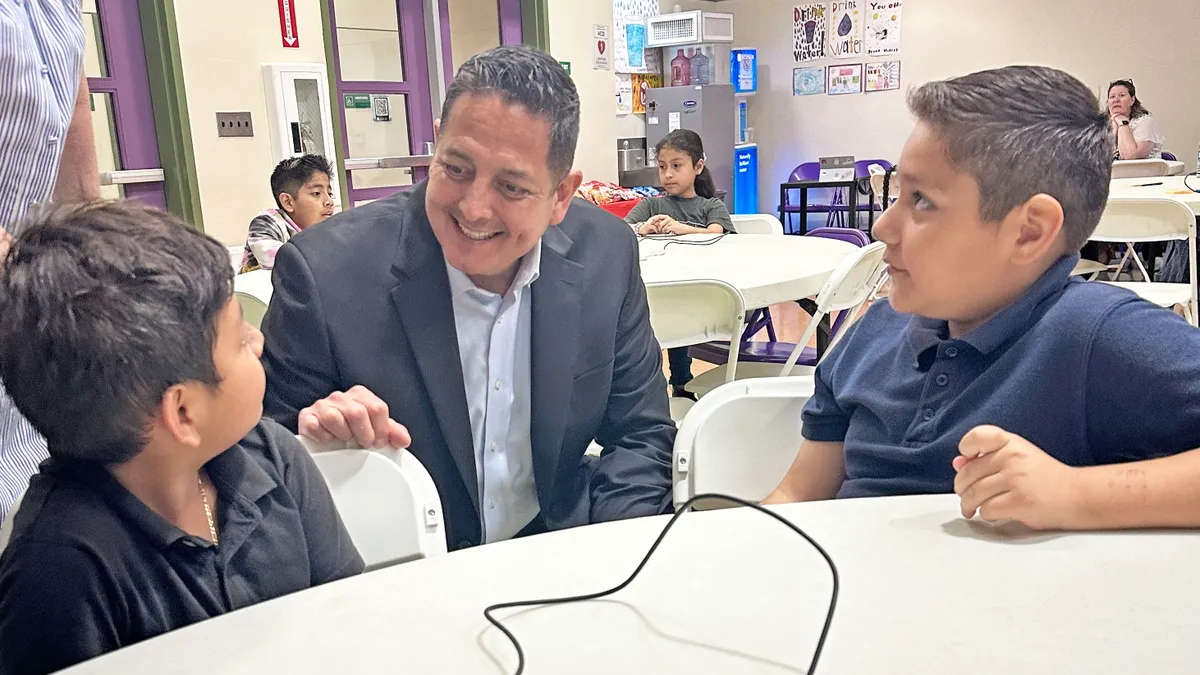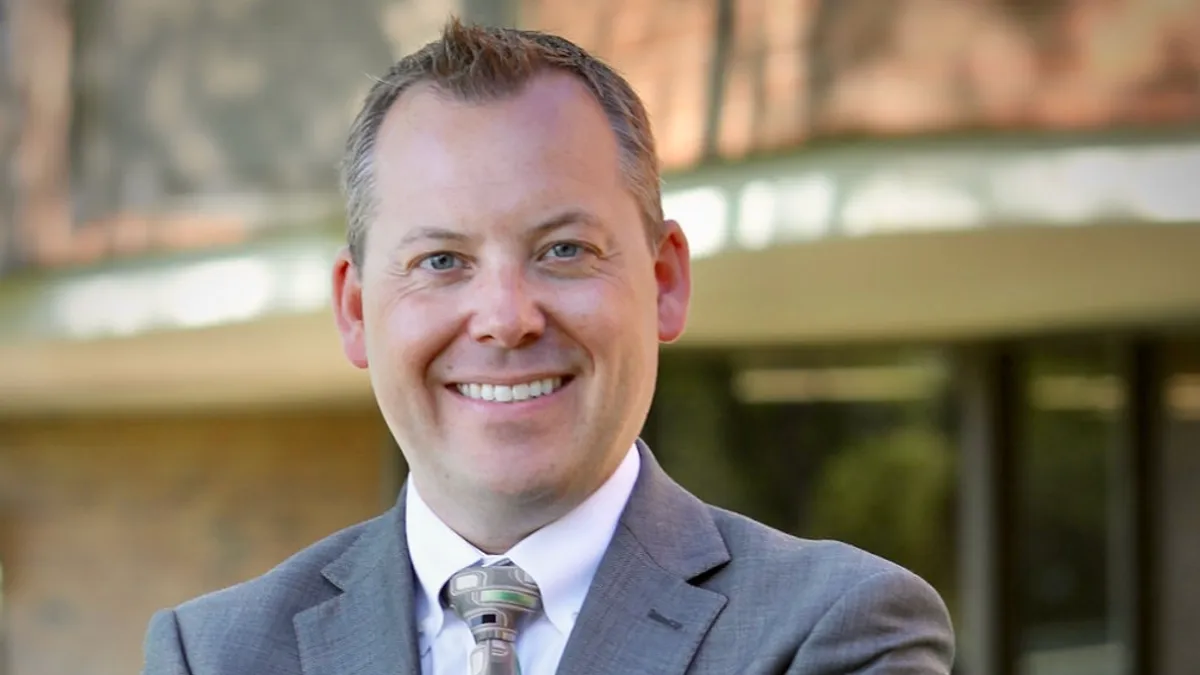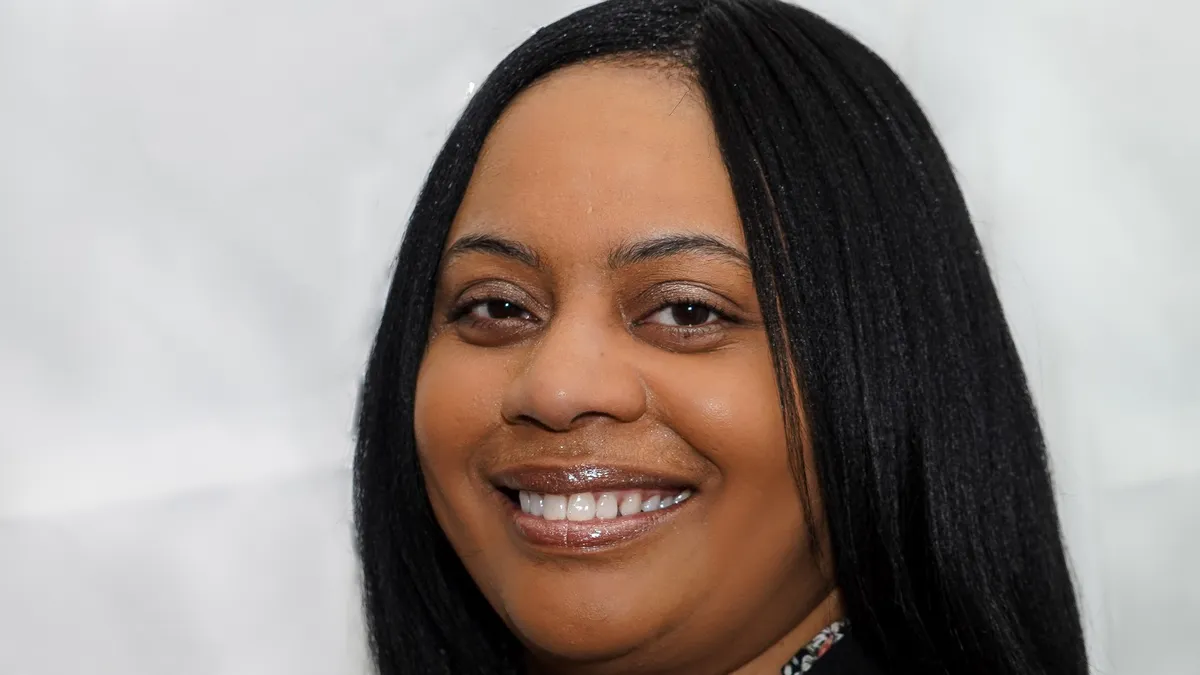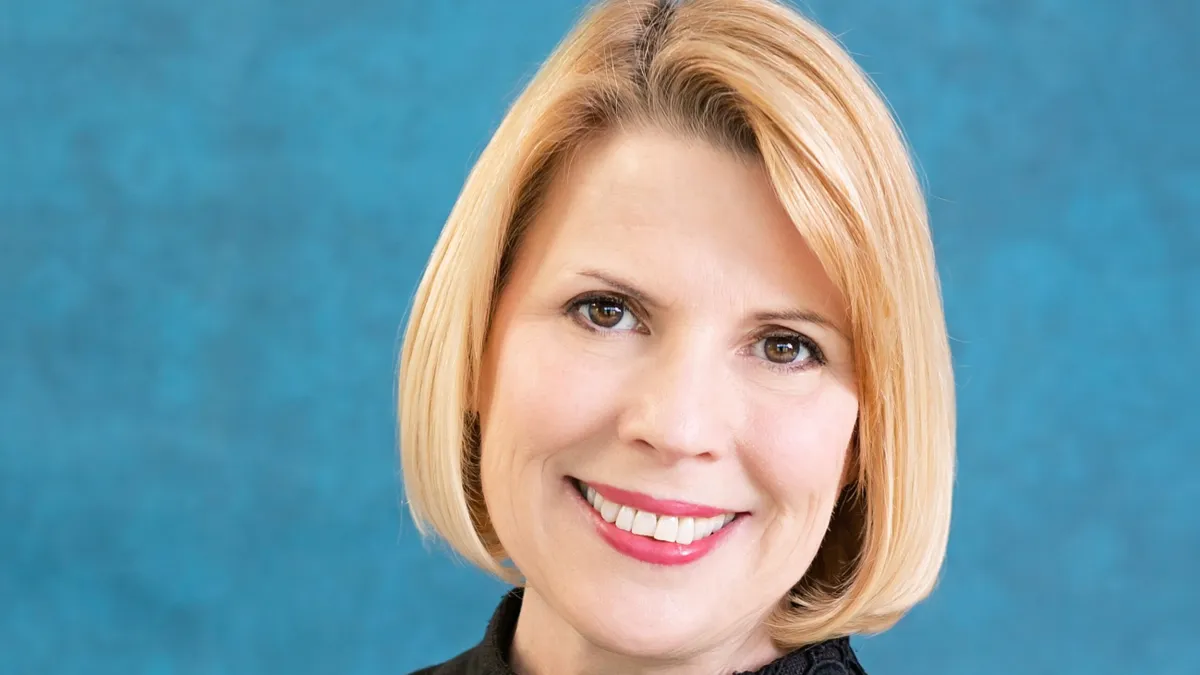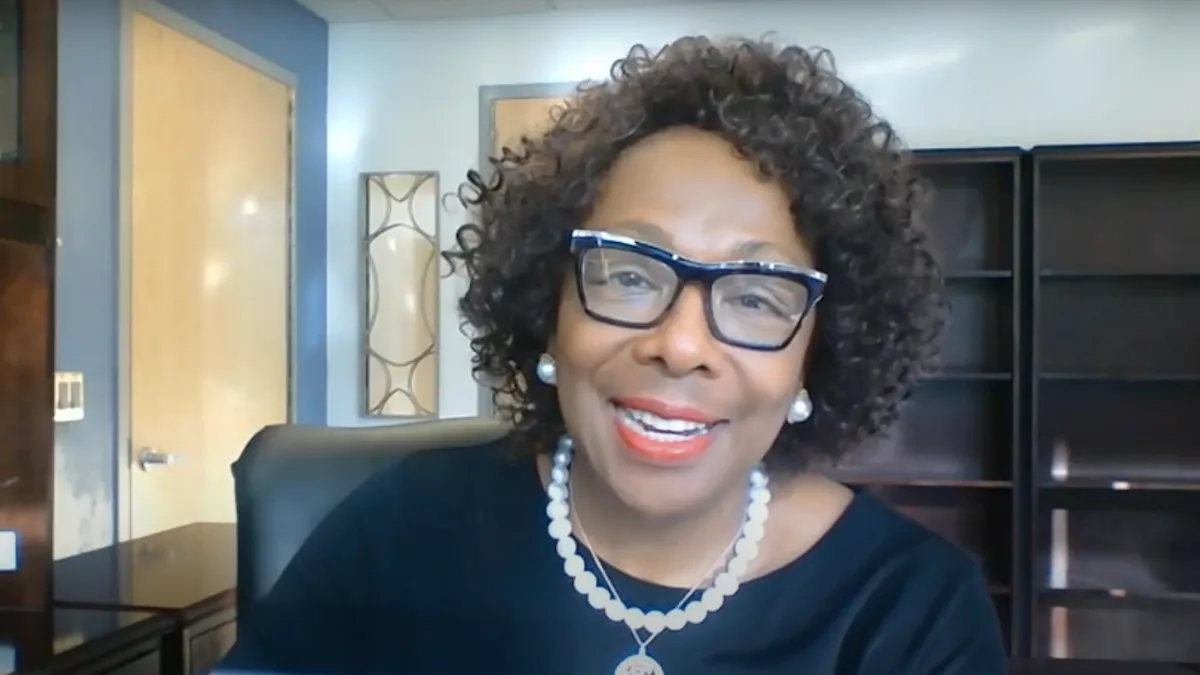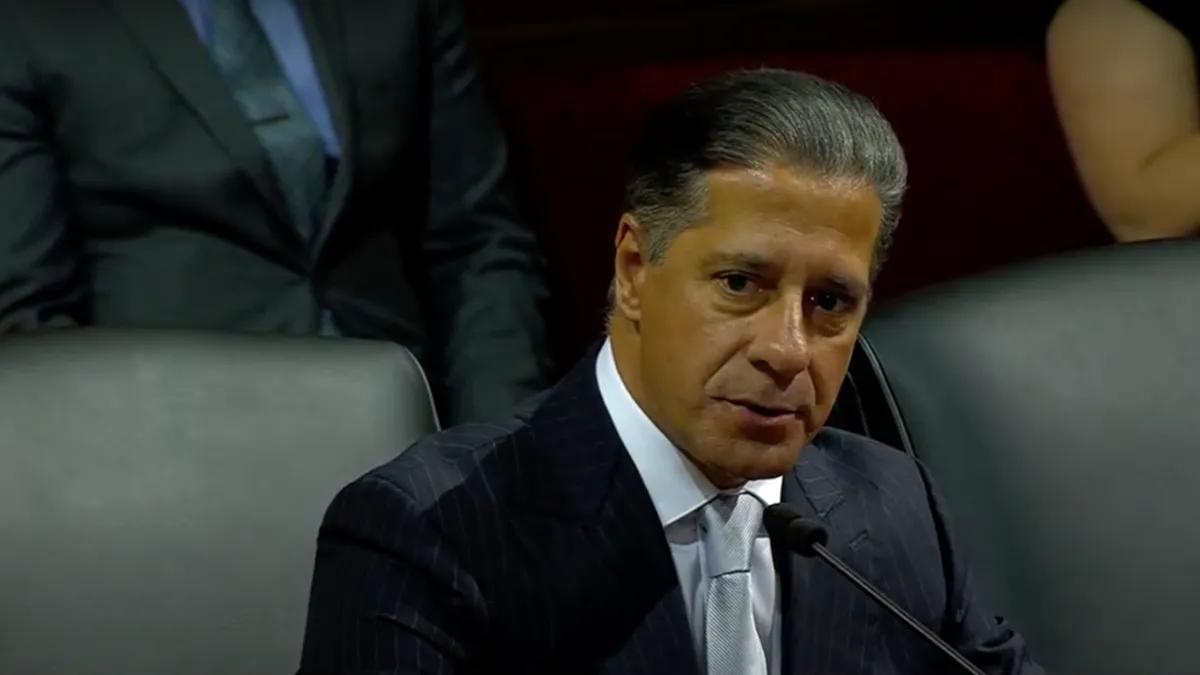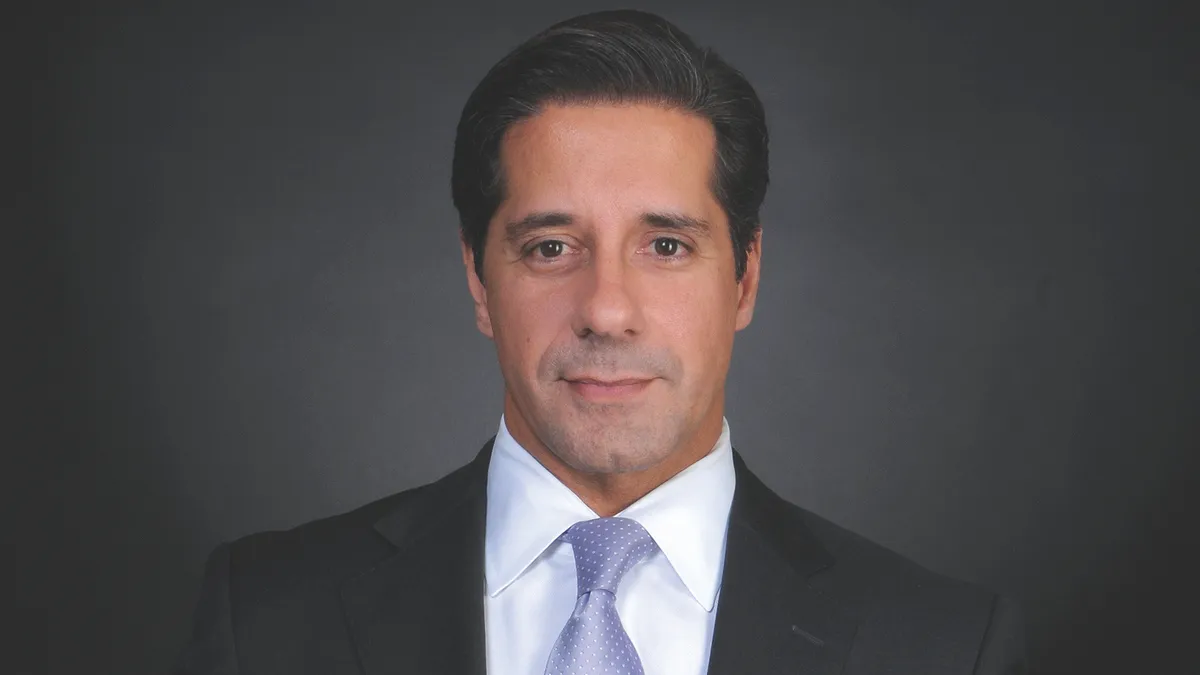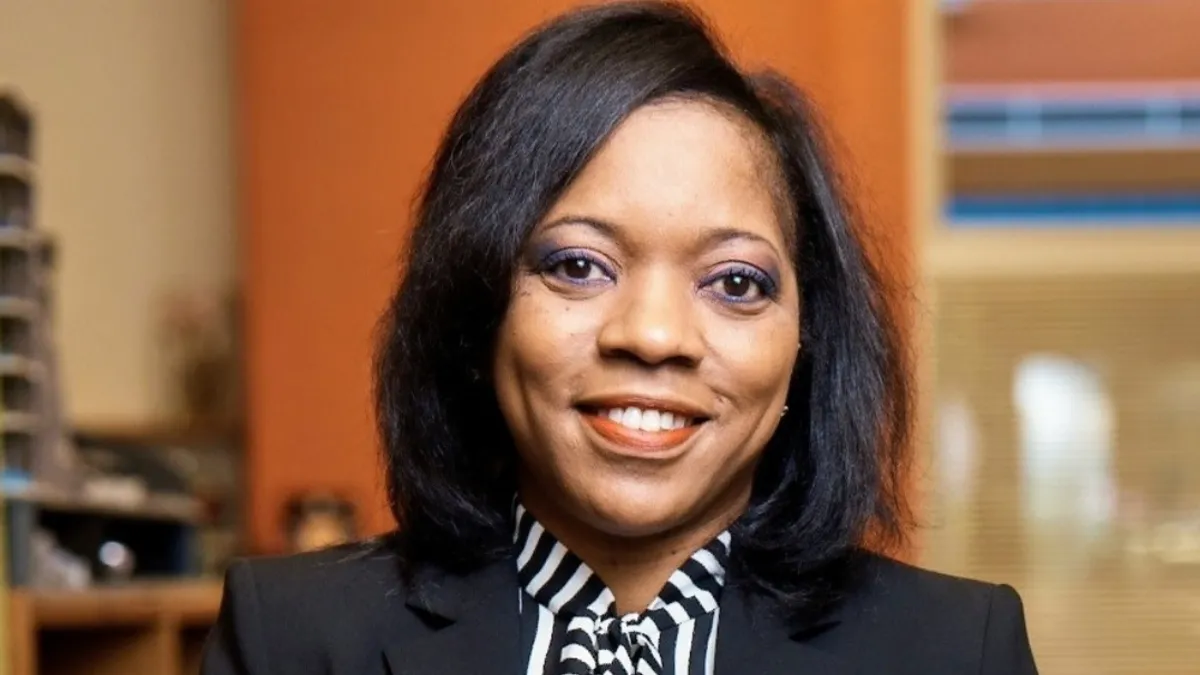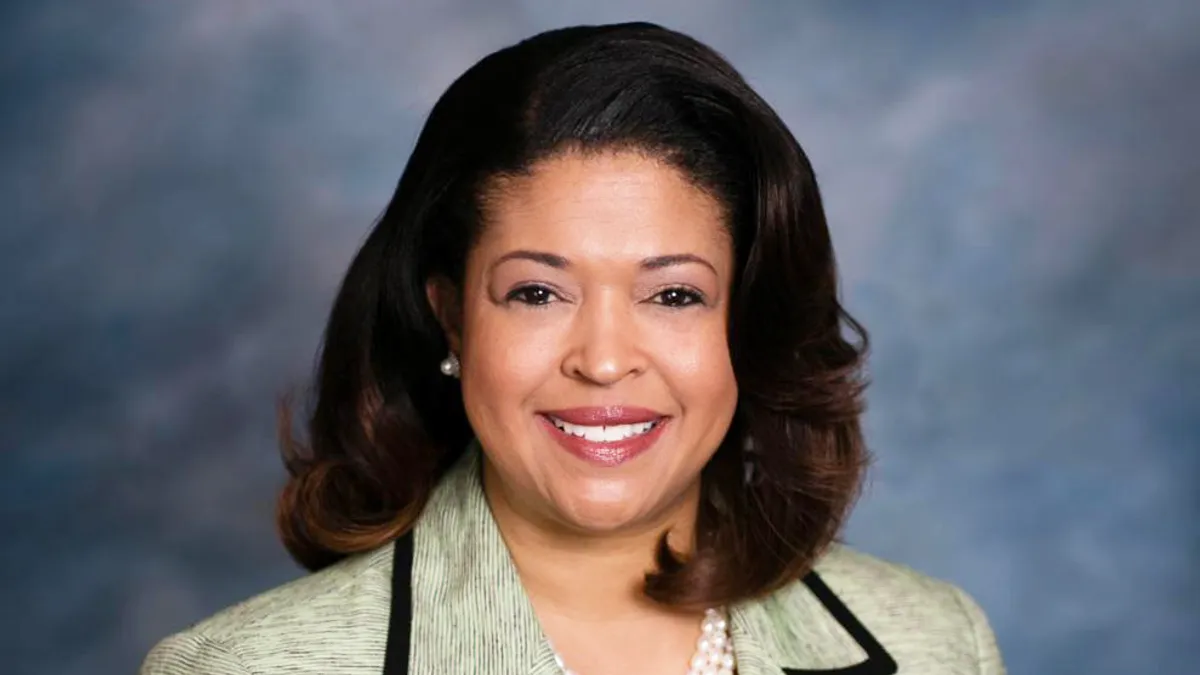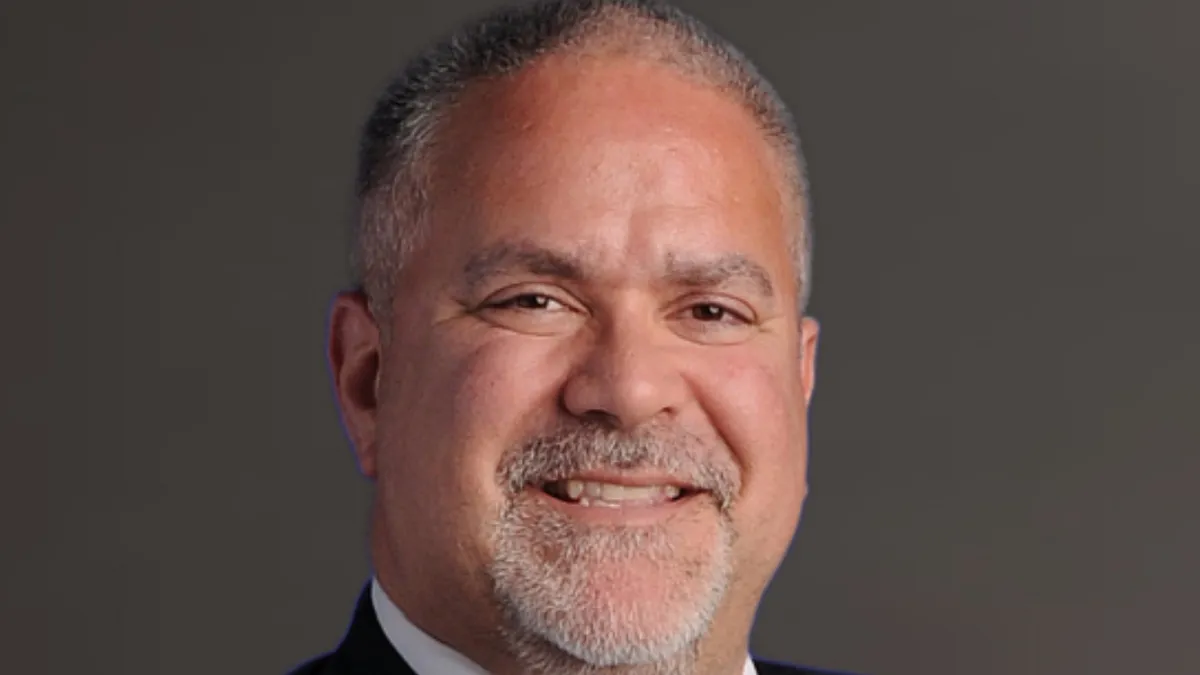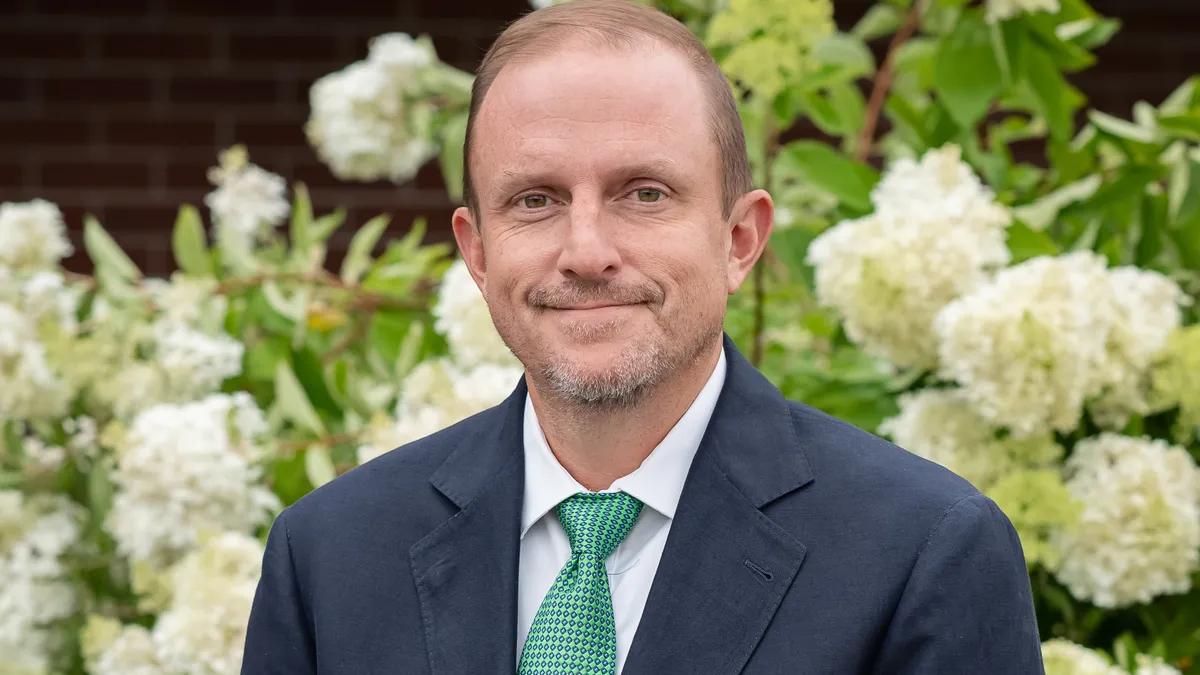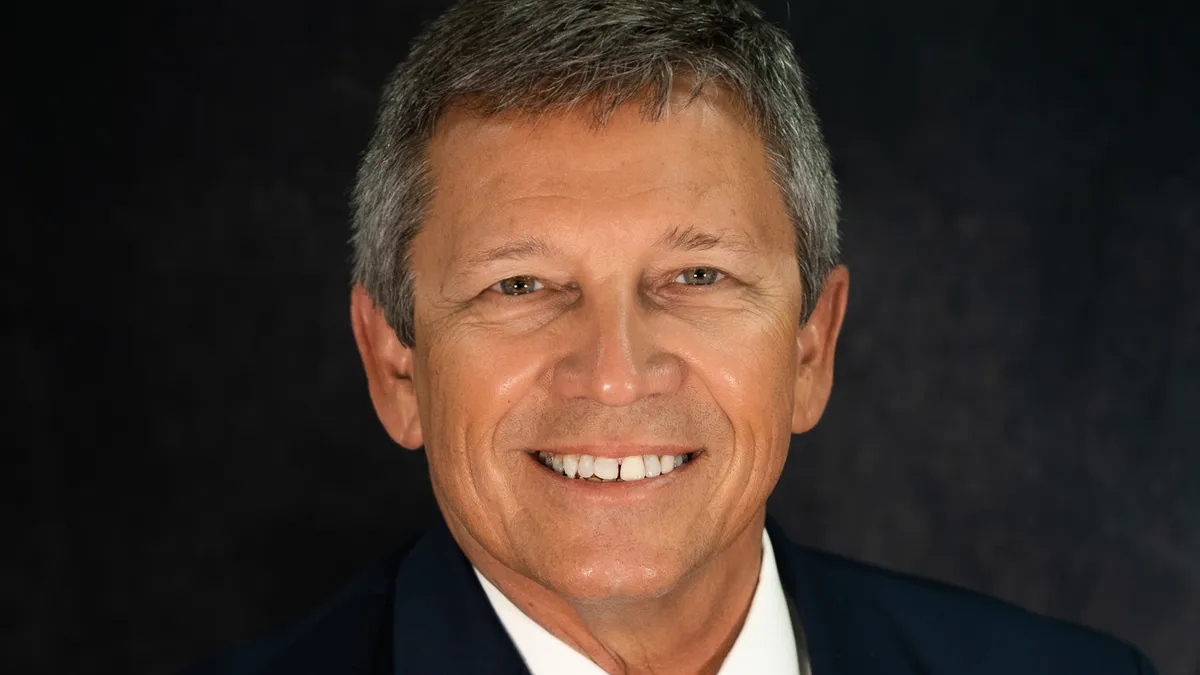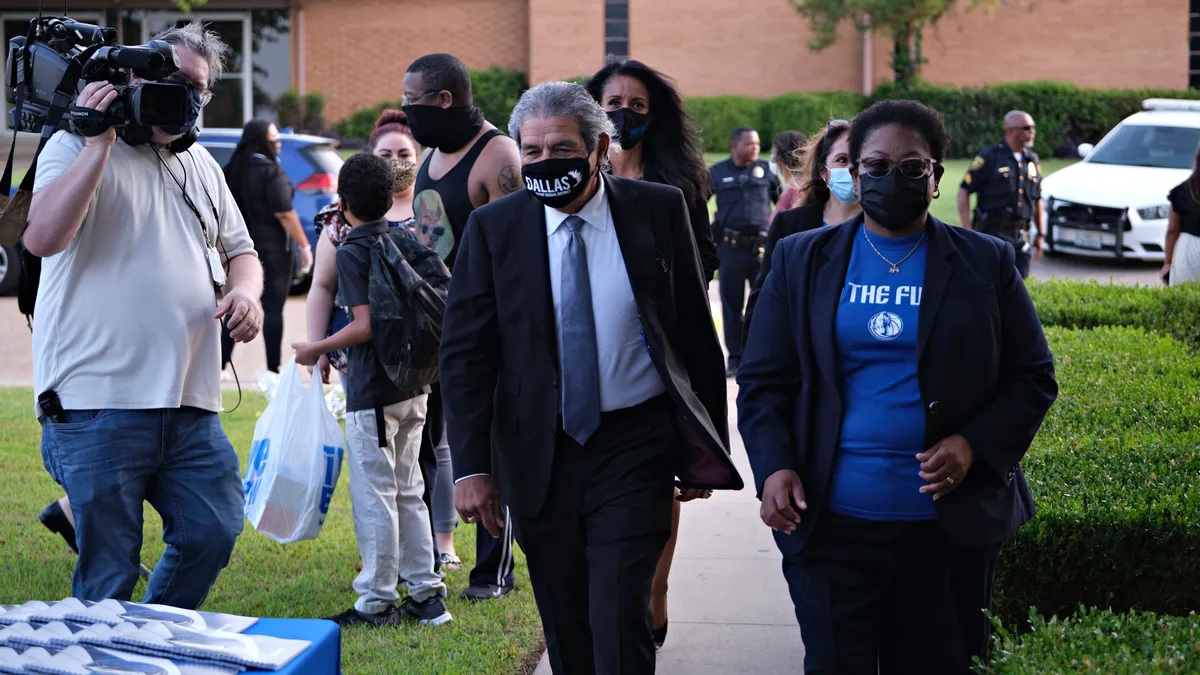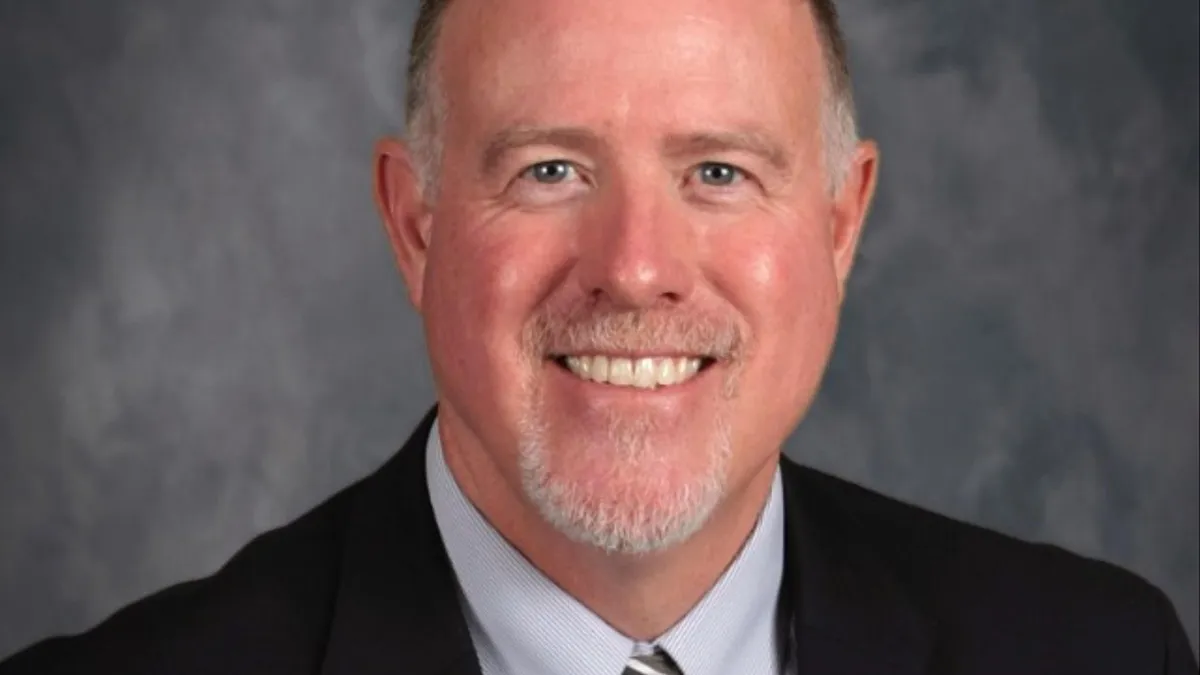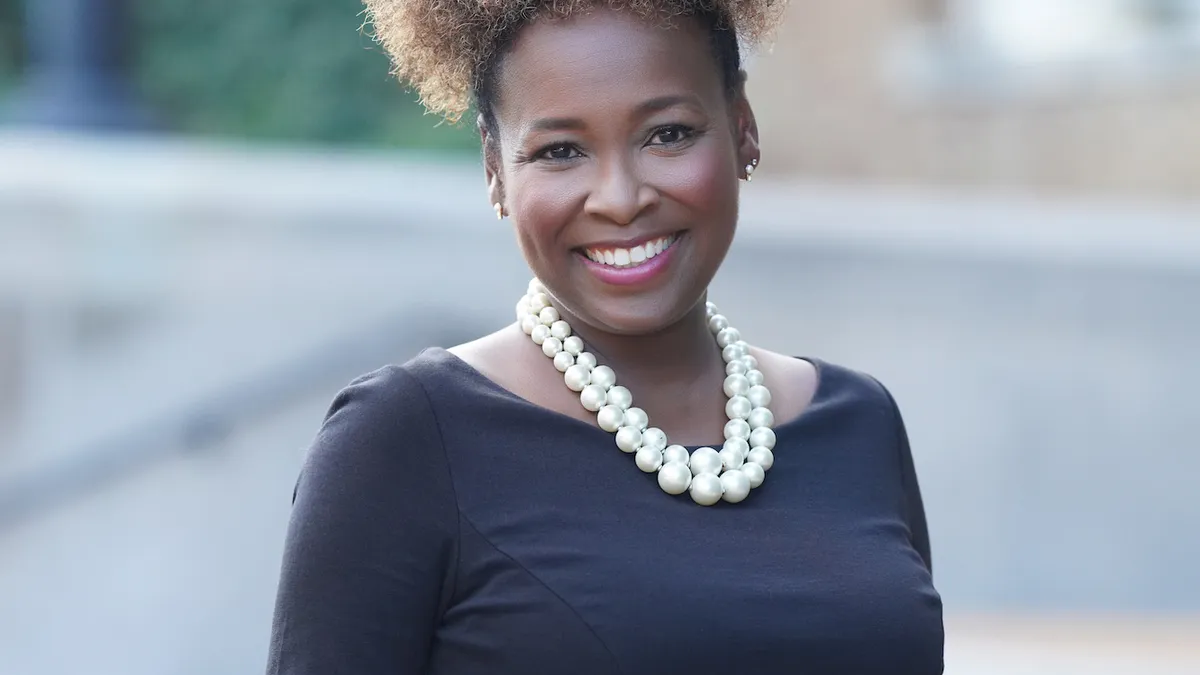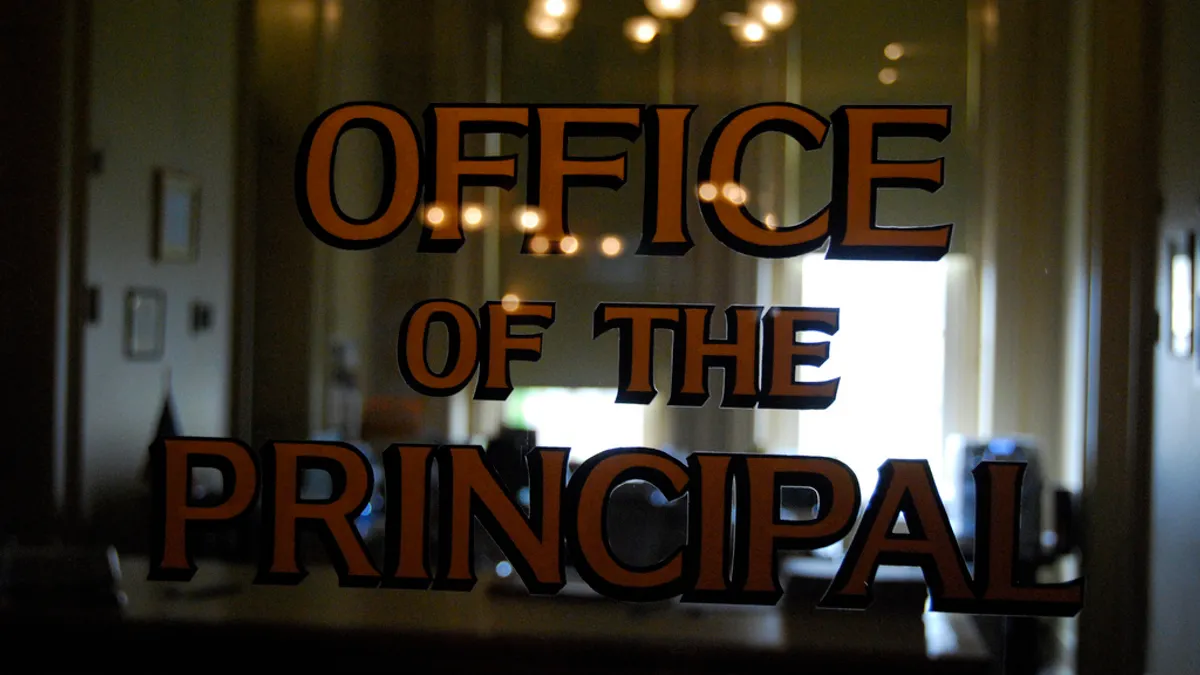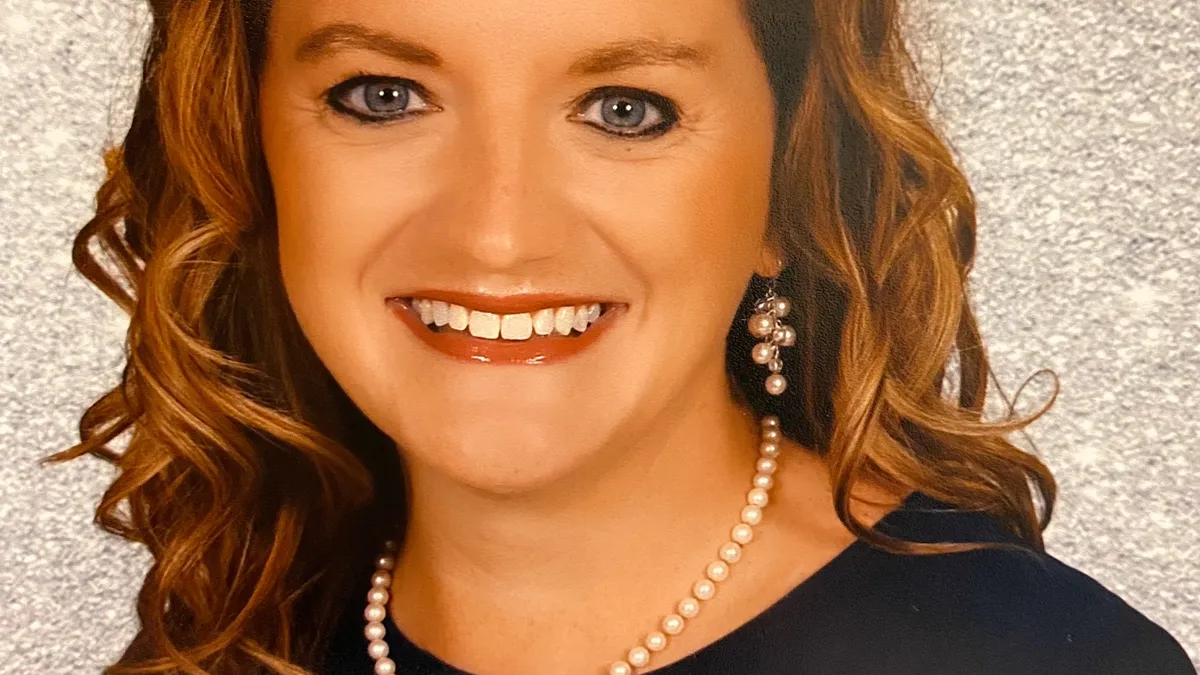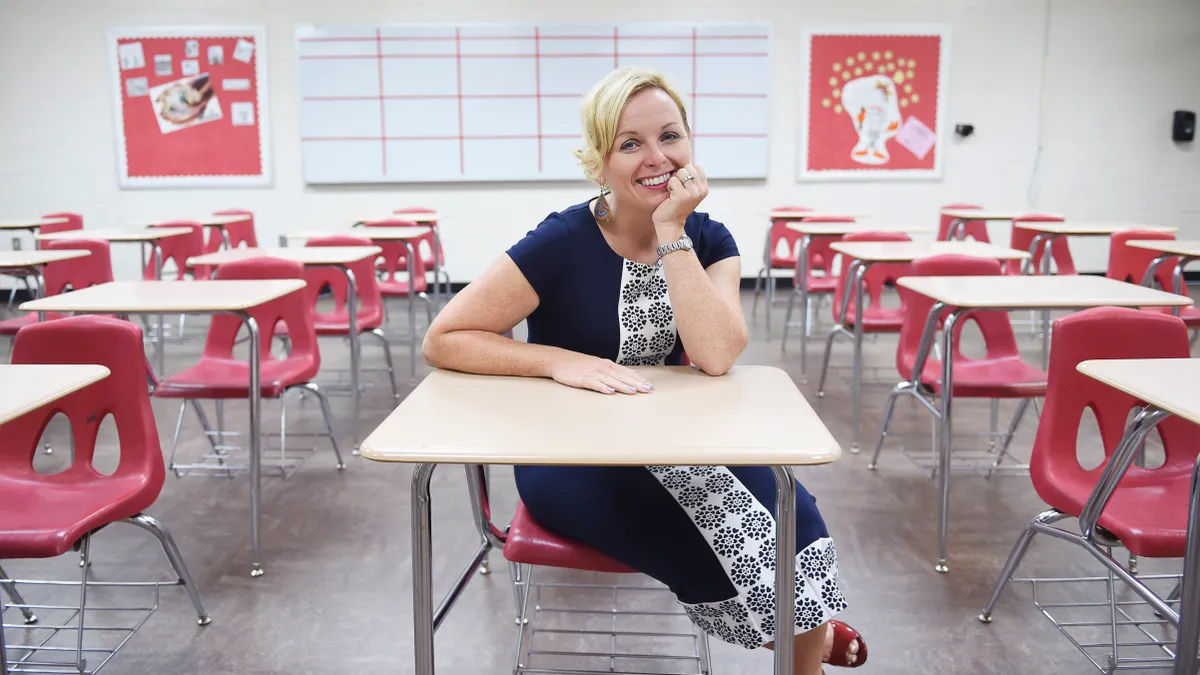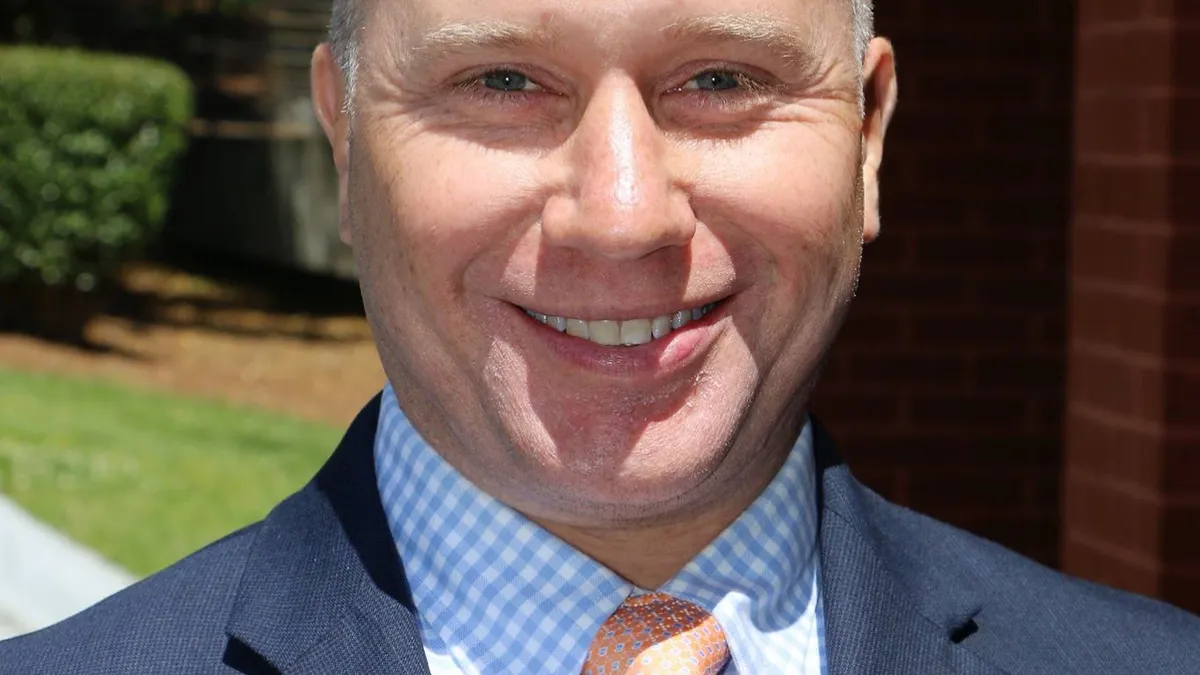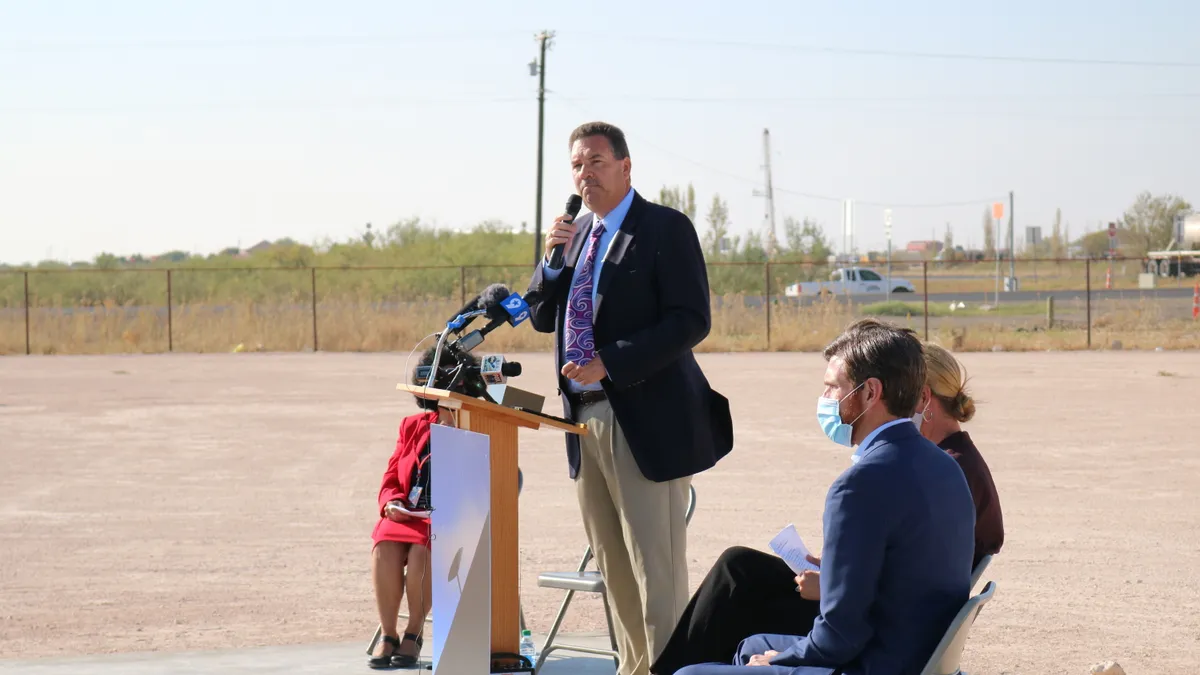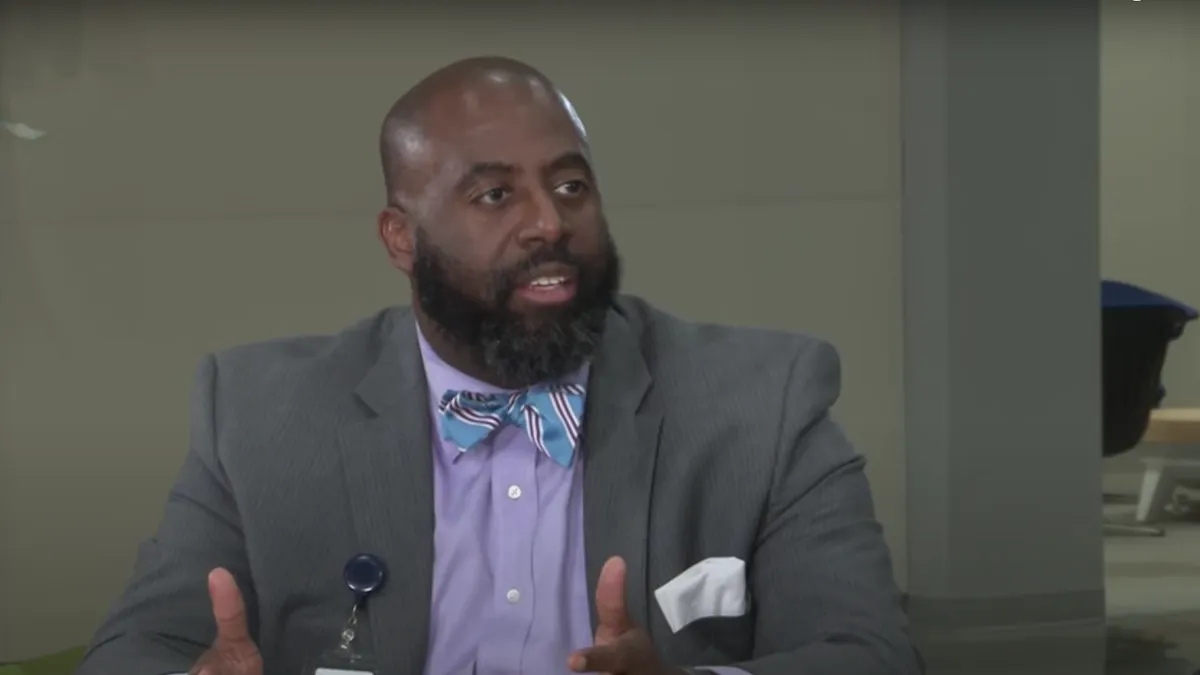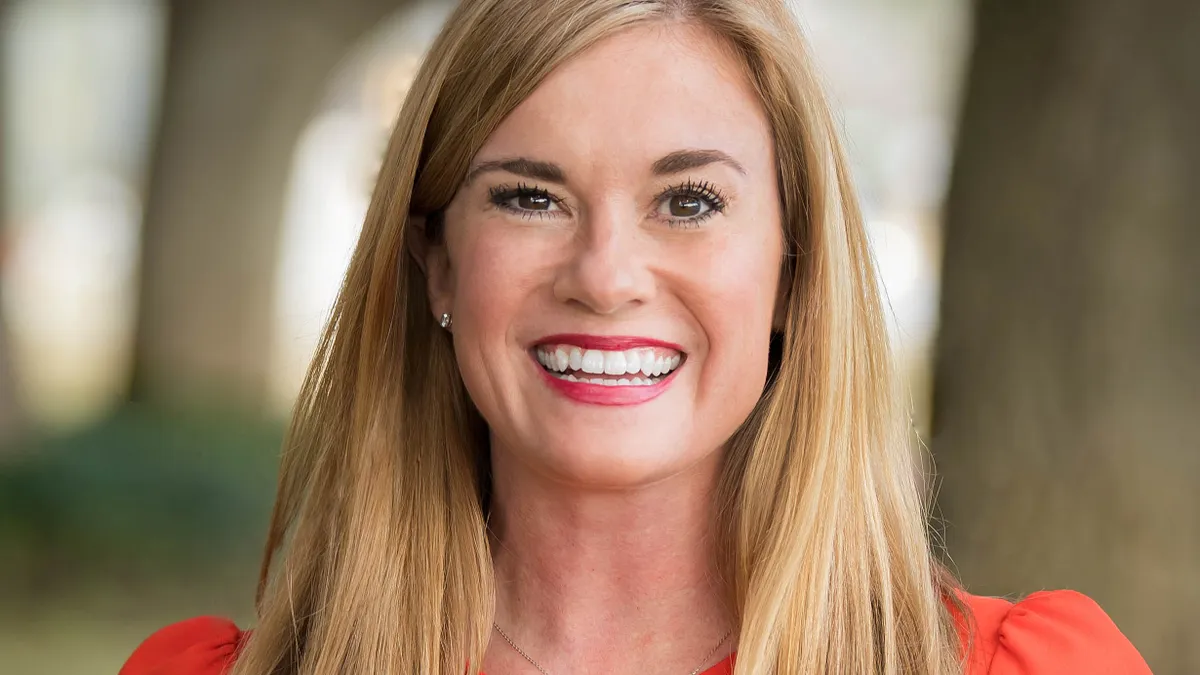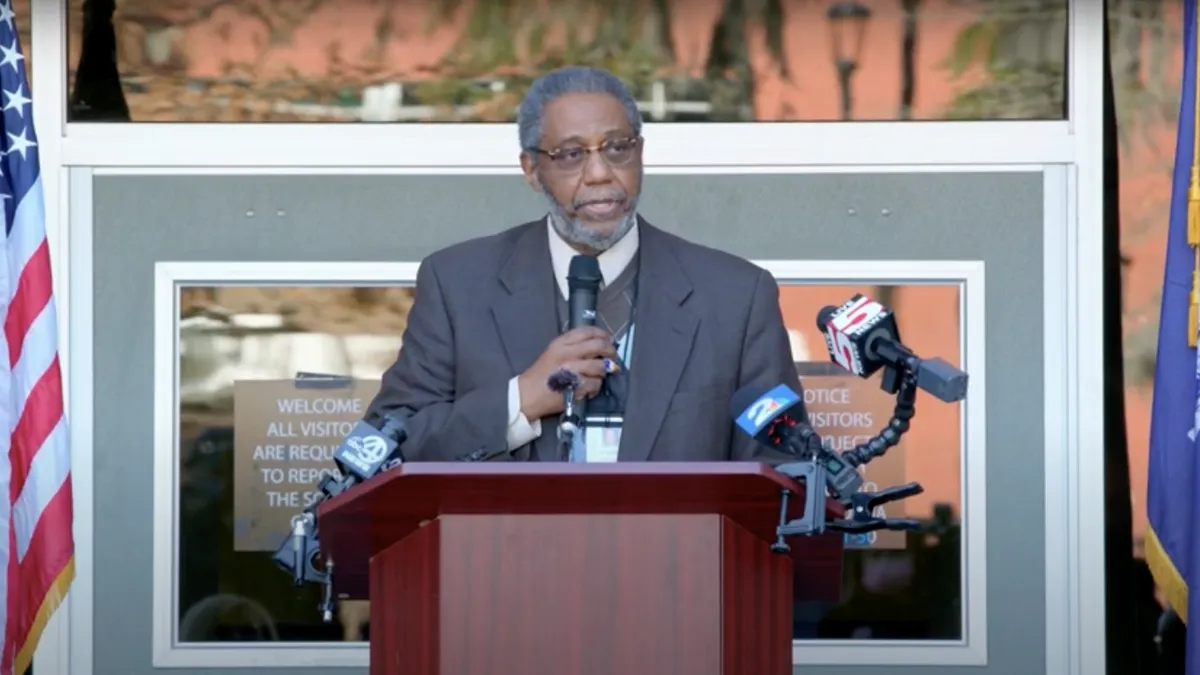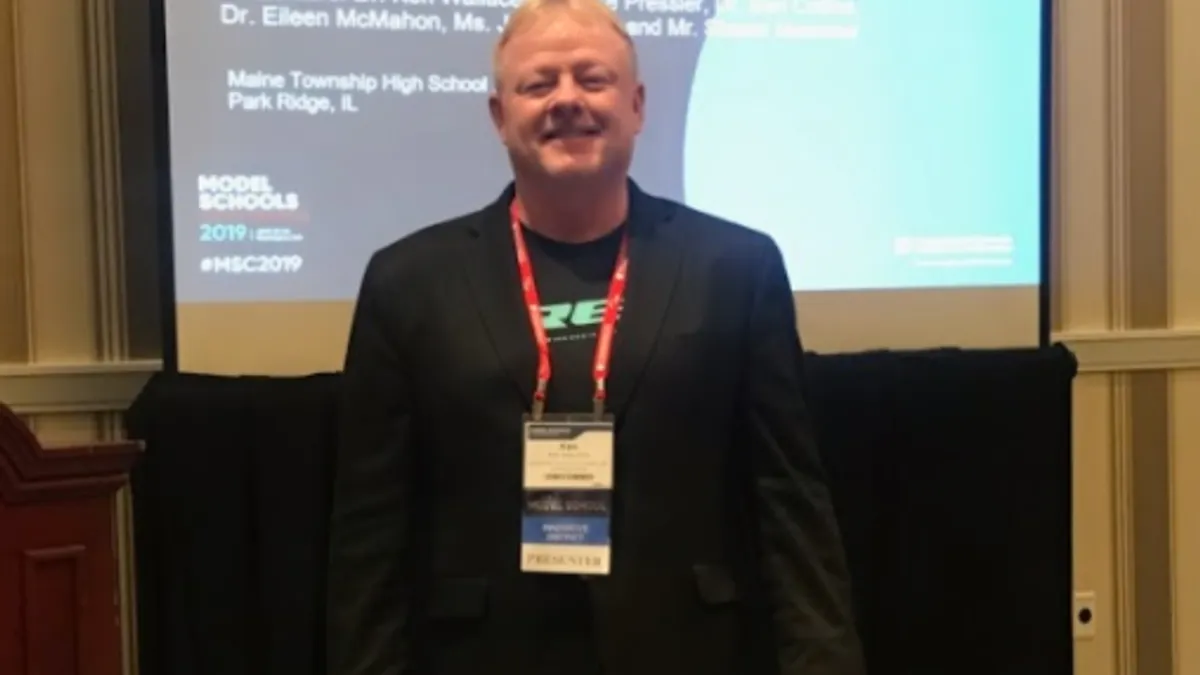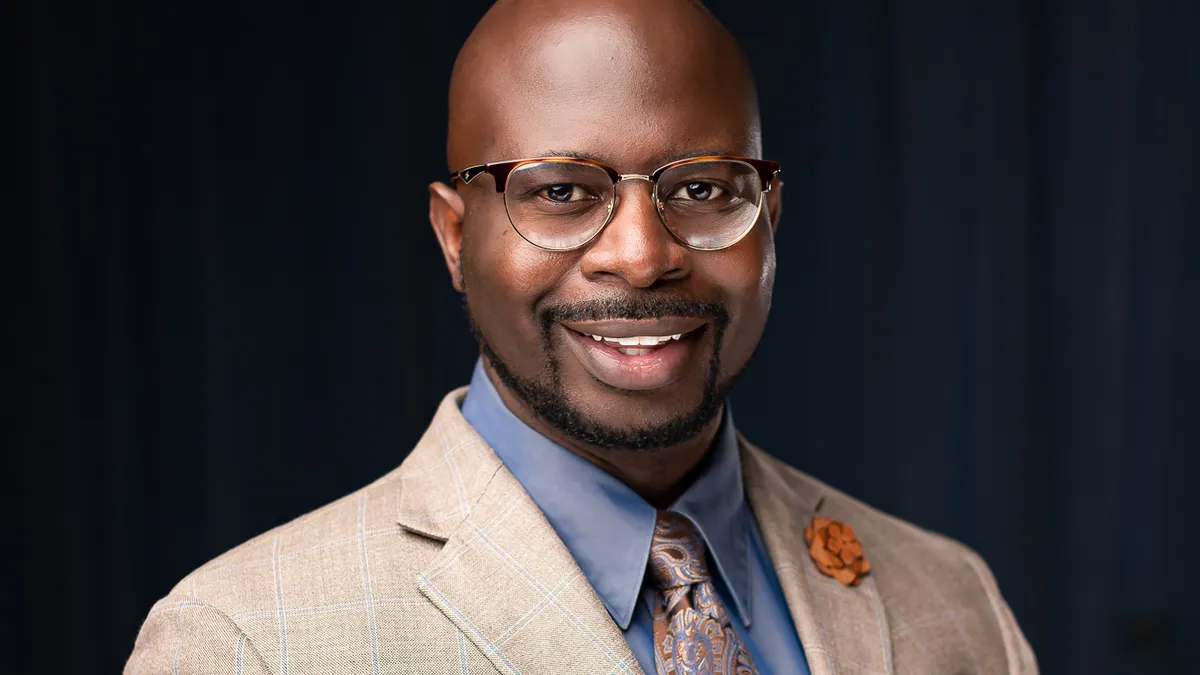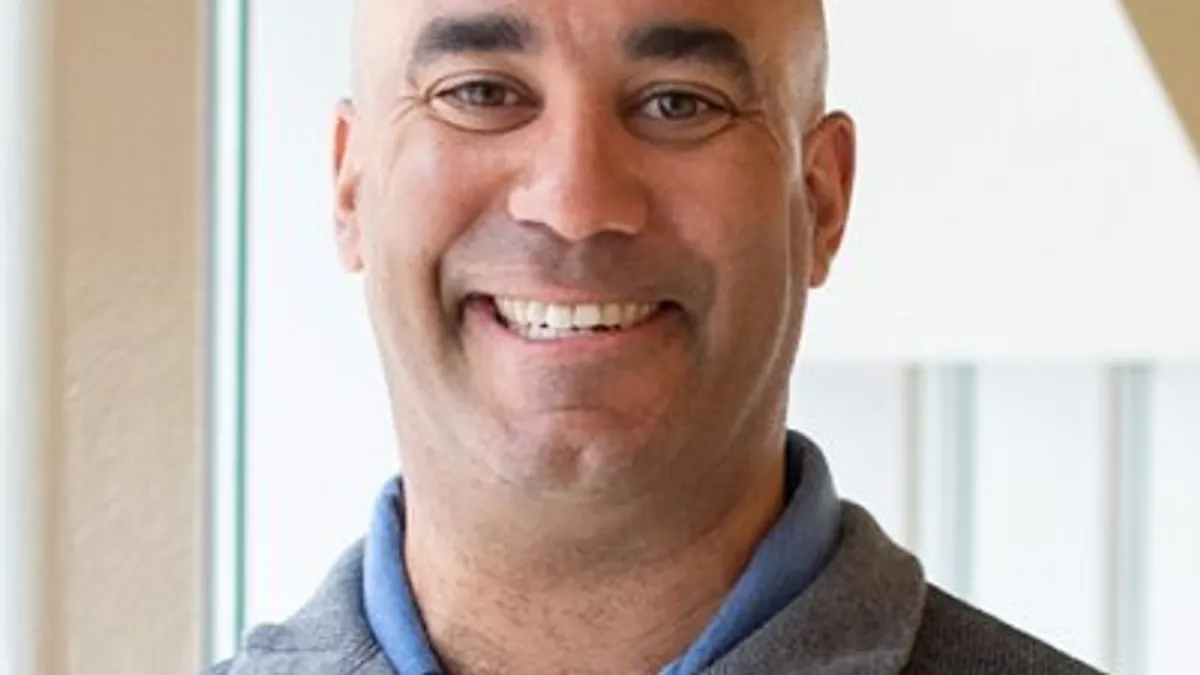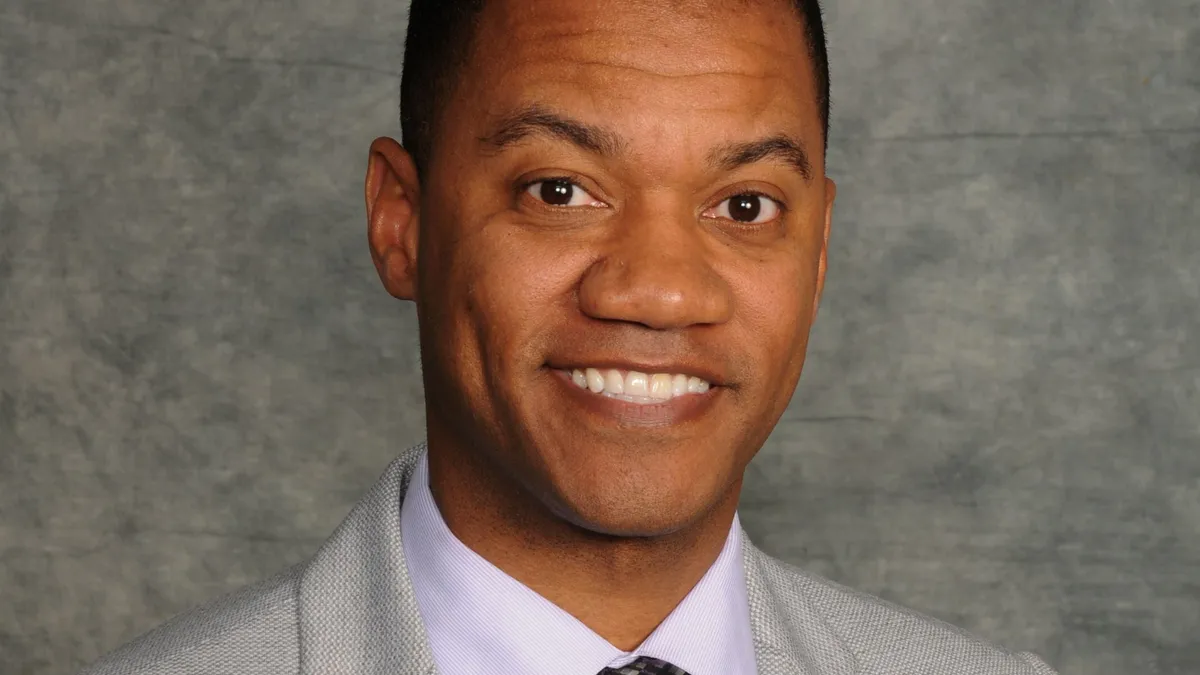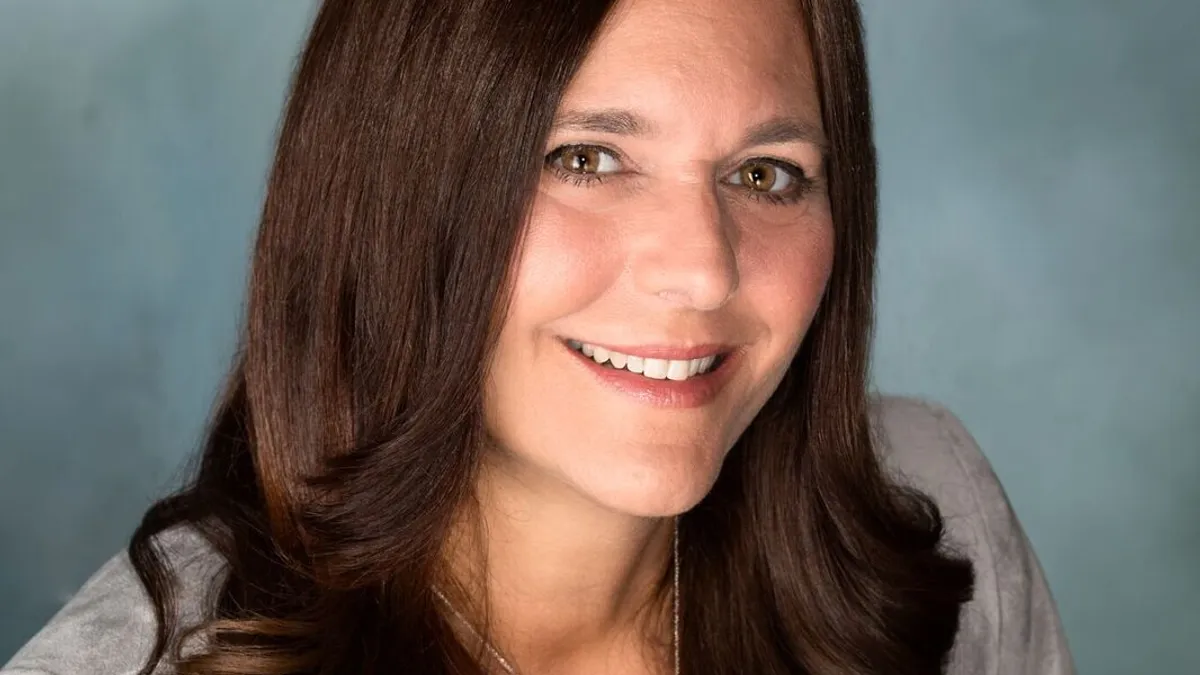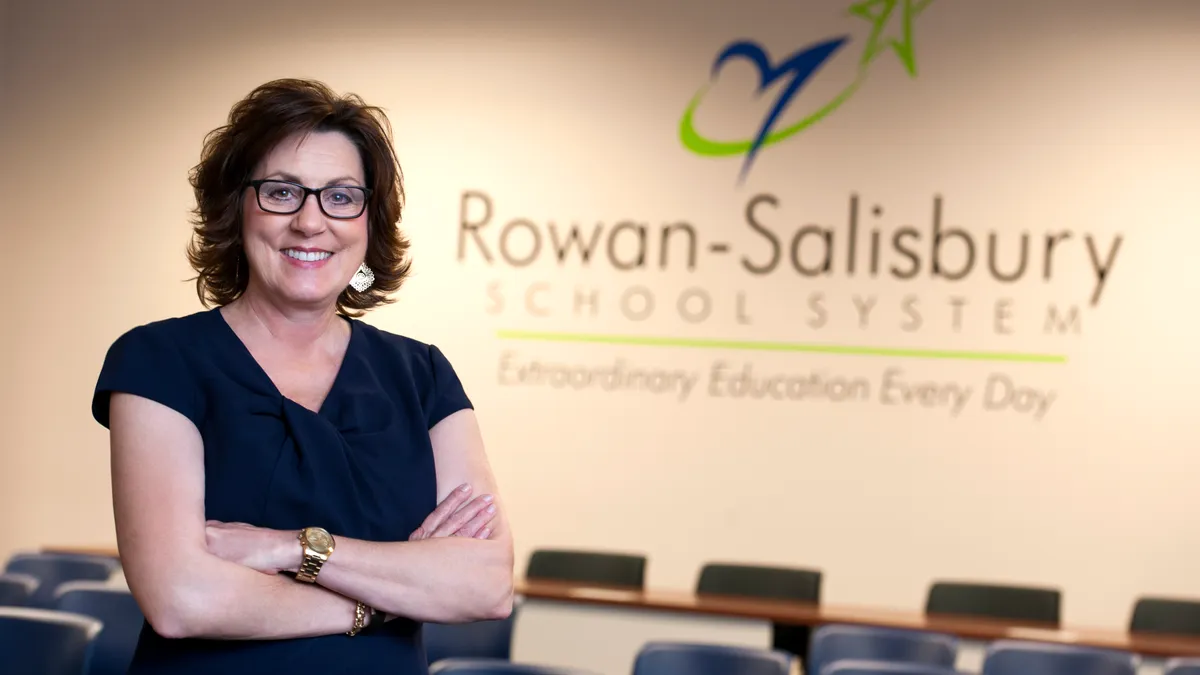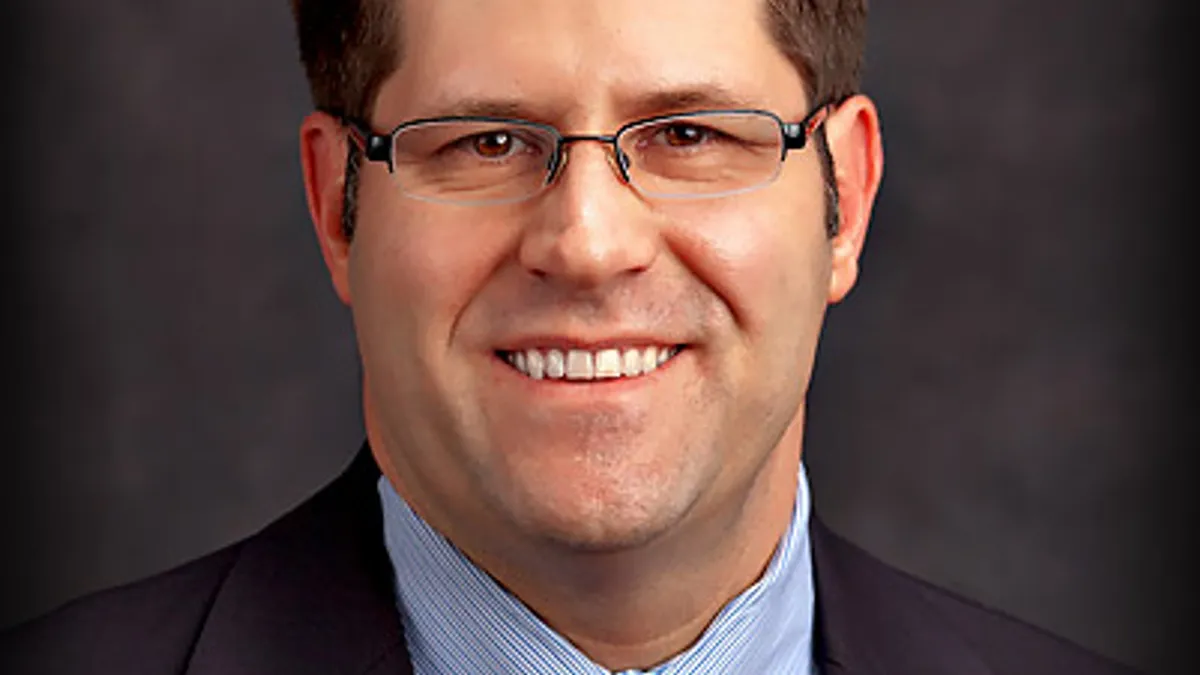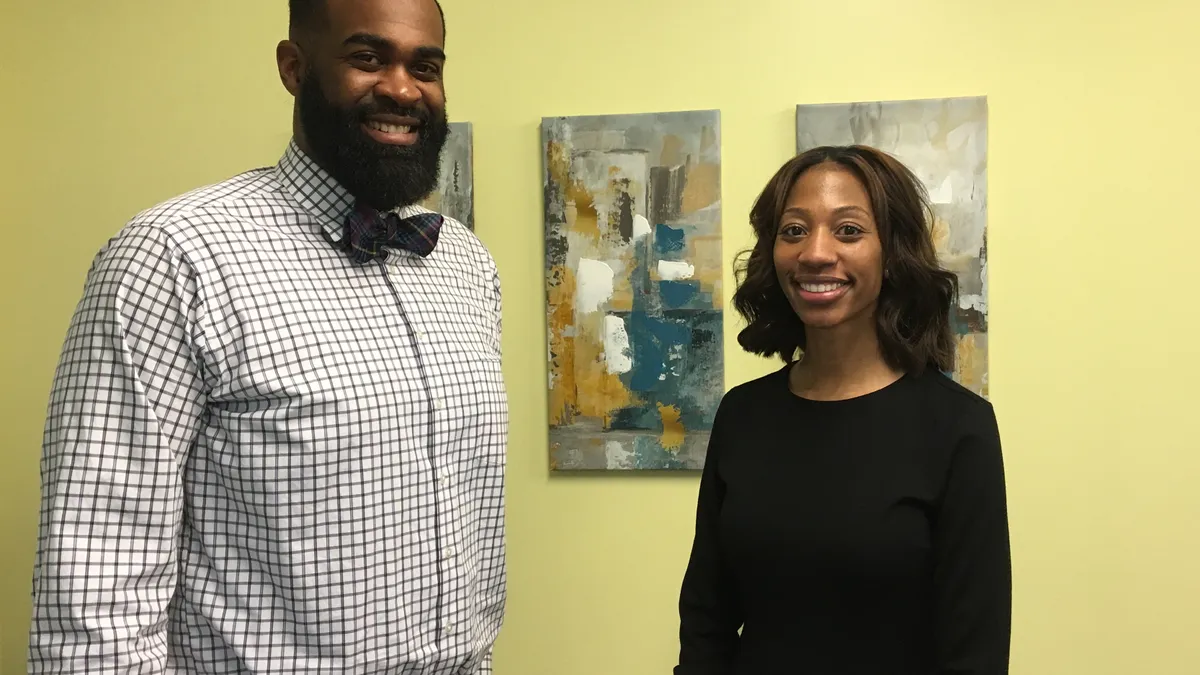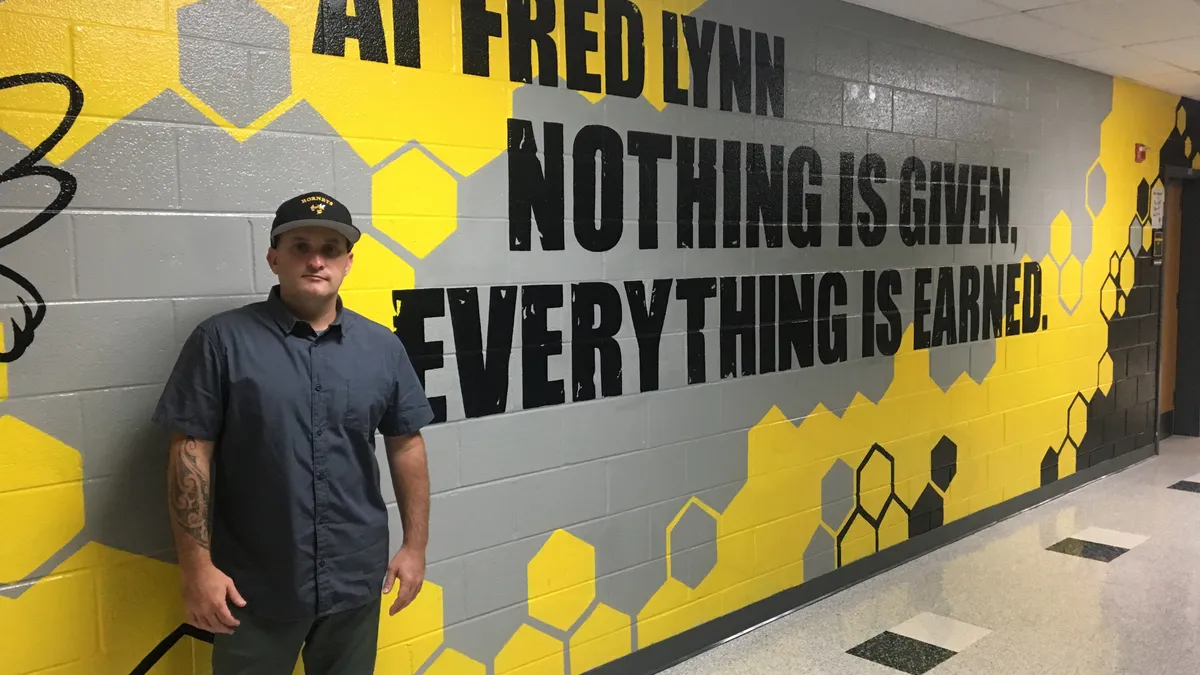Lessons In Leadership is an ongoing series in which K-12 principals and superintendents share their best practices as well as challenges overcome. For more installments, click here.
Born and raised in the Bronx borough of New York City, Alex Marrero spent most of his career in nearby city and suburban schools prior to taking the reins of Denver Public Schools, Colorado’s largest school district, in 2021. The son of a Cuban refugee and Dominican immigrant, Marrero prides himself on being fiercely committed to ensuring that the whole school community — especially those whose voices tend to be underrepresented — is heard in the decision-making process.
Case in point: Before Marrero rolled out an ambitious school turnaround strategy dubbed the School Transformation Process in May, he first sought input from a variety of advisory councils across the community. In a state where schools can be slated for intervention after five years of low ratings, the strategy provides a four-year window for low-performing schools to improve by, among other things, getting greater centralized support. Those that don’t improve will face closure or the replacement of leadership, staff and programming.
Marrero, Denver’s third superintendent since 2018, is careful to separate the potential for school closures and restructuring under his turnaround strategy from a recent round of closures due to low enrollment. And Marrero also said he understands that school closures under previous leaders had left a bitter taste for some community members.
Announcing closures tied to declining enrollment before unveiling the turnaround plan "was purposeful, because I didn't want the two to be connected,” Marrero said. But now having gone through the process of closing seven schools and restructuring seven to “right-size” the 88,000-student district due to enrollment declines, Marrero said, his new school improvement strategy could also help alleviate the need to go through that process in the future.
We recently caught up with Marrero to learn more about the School Transformation Process, his strategy for engaging the community, and how he tries to make sure all voices — not just the loudest — are heard.
Editor’s Note: The following interview has been edited for brevity and clarity.
K-12 DIVE: You recently unveiled the School Transformation Process, where you're aiming to group low-performing schools together so they can get more district support and coaching. What was the planning and thought process when you were putting that plan together?
ALEX MARRERO: It was multi-faceted in terms of the approach. I believe that every student deserves access to a high-quality education regardless of their school type or neighborhood.
We have four different types of schools: A traditional district-run school. An innovation school, which is a traditional school that has certain flexibilities through the waiver process we have here in the state. Those schools can also group themselves and become an innovation zone, so I would say that's the third type of school. And of course, we have charter schools that we authorize and approve, but they're autonomous.
I really struggled knowing very well that we had a task ahead of us of closing schools.
In that deep reflection, I realized that I was vulnerable in the schools that I'm responsible for, because I had schools that were persistently low-performing that were well beyond five years on the state clock, and they haven't closed.
What are we saying to a community if we have a school that for close to a decade is persistently low-performing?
I realized that I needed to create a system where we had the same bar for all of our schools. This process gives us the tools to act earlier or more consistently, with community input before the state steps in.
The goal is not to punish schools. It's to really articulate the standard to truly, intensely help the schools improve while there's still time to do so locally. And if we are unsuccessful, then we empower the community to tell us what to do with that school.
You mentioned the community input angle of that plan. What sort of approach did you have when it came to presenting this initiative to the community, given that there is the potential for school consolidation and closures under the plan?
MARRERO: This was, I would say, a year in the making. I had the team put together what I was envisioning, and then after several iterations of the policy, I felt comfortable creating a presentation to attach to the policy.
That's when I started the “road show.” It wasn’t officially called the road show, it's just every advisory council that we have — from the district advisory council to the Black family advisory council to the Latino advisory council to the student advisory council. We have a lot of advisory councils, and they all funnel upward toward a superintendent advisory council, which I call the SAC.
We [presented to] the union heads … our innovation zone council, collaborative council, charter collaborative council. And then I did my individual board sessions.
Then I went public with the board meeting, and now everyone who was not part of an advisory council or group was able to see it.
No one was against it, which, actually, I was surprised at because of the closure component. But I would say [the response was] at worst neutral, and at best, folks were incredibly excited about it.
I am not here to instill Marrero-isms on any system. I'm not here to try to reimplement what worked in New York here. It would just simply not work.

Alex Marrero
Superintendent, Denver Public Schools
After that, we had some coverage and a lot of wondering, and it allowed me to provide a little bit more of the “why.” And I think that's important, because it's just not us trying to redo something. Denver has had a history of closing schools. This is not that. This is truly renewing, reconfiguring and reimagining.
And yes, reimagining is another way of saying “replacing,” right? But it's all in the approach on how we want to empower.
How did rolling this out compare to the closure process the district also went through recently due to enrollment?
MARRERO: That was a lot more brutal, because it was just a shuttering of doors because of numbers. This is a path to turnaround, and if we're not successful, then we're empowered to reimagine. I think that that's why the community has embraced this over the other.
How do you ensure that you're engaging the community in a way where voices that are often overlooked are weighed as much as those that might be the loudest in the room?
MARRERO: That is the hardest thing, and depending on who you would ask, in certain channels I'm someone who really, really embraces that. But you'll find some elements of folks who feel like the community engagement process could be a lot better, and they're incredibly critical. What I would say is those tend to be the individuals who are the loudest in the room, whose opinions or ideas may not be what the district moves toward, so they're upset.
I believe in and embrace my duty to be a public servant. I am not here to instill Marrero-isms on any system. I'm not here to try to reimplement what worked in New York here. It would just simply not work.
I am responsive to the community I'm serving, a true public servant. And in our community here, the historically marginalized populations are sometimes not invited and, in certain cases, are just simply invisible. What I try to do, which frustrates some folks who know how to navigate the system, who are embedded into the system because of either their background or their roles or because they're savvy enough to do so, is not to put them to the side — because that would be inappropriate as well — but I hear them loud and clear.
I'm concerned about the community member who may not be the fifth-generation Coloradan but is in Colorado because they migrated here. I'm concerned about those who have a different way of seeing education. The cultural component plays a major part.
There's certain cultures where they don't feel like they should say what the school system should do, because where they're from, the school system is usually right and “Who are they to impose their thoughts?” How can I empower them to say, “That's not how we function here?” That's the hardest part.



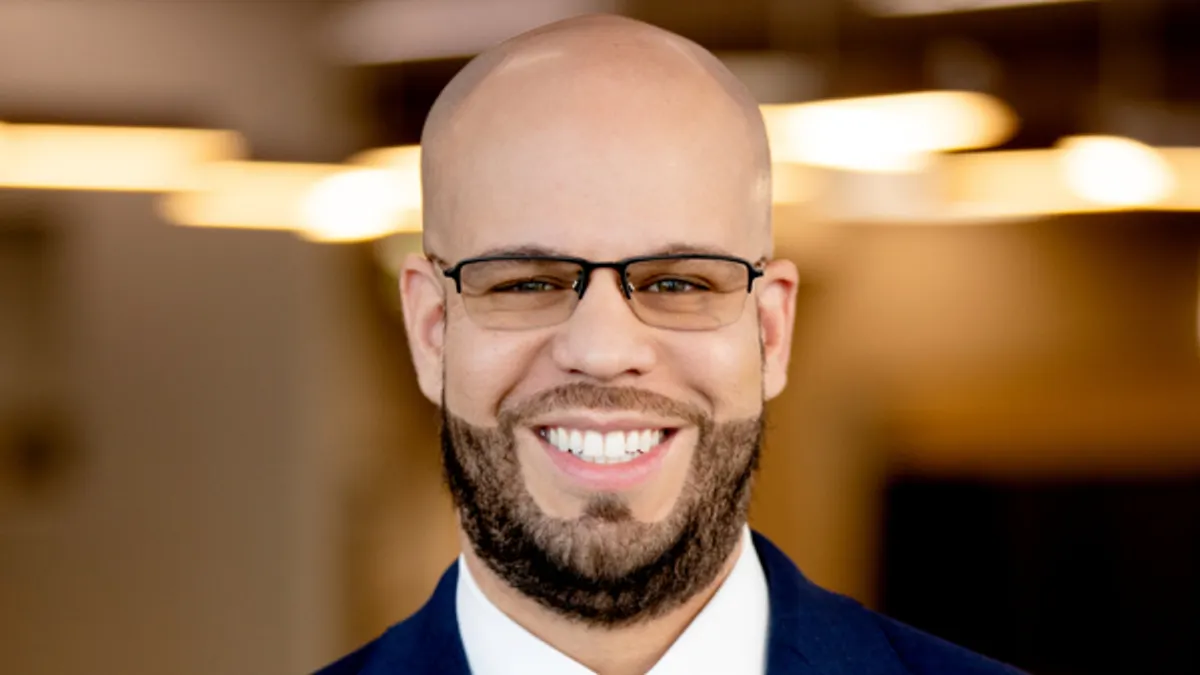



 Dive Awards
Dive Awards

